With so many plants, and even weeds, struggling with the dryness, I have felt very reluctant to get out into our heathlands and woodlands.
The April nature walk at Fraser Avenue was a lesson in plant survival. Most surprising was seeing two plants in flower on the very exposed sloping road verge. Cranberry Heath, Astroloma humifusum, was developing red tubular flowers in amongst the mat-like, bluish-green, fine pointed foliage. This plant normally starts to flower at this time of year but I have yet to see flowers on any plants elsewhere.
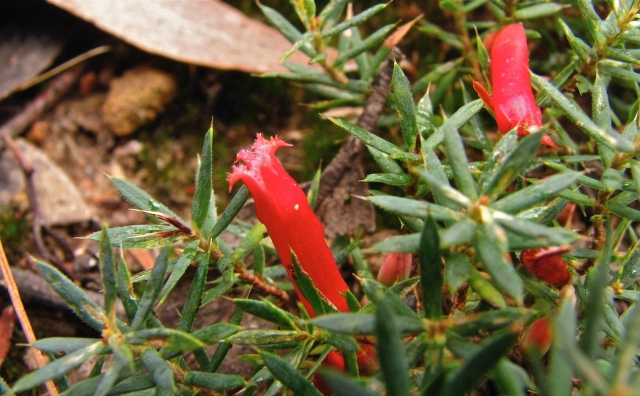 Cranberry Heath
Cranberry Heath
Another plant in flower was Prickly Broom-heath, Monotoca scoparia, with its tiny white flowers, in this case female ones, as they grow on separate plants.
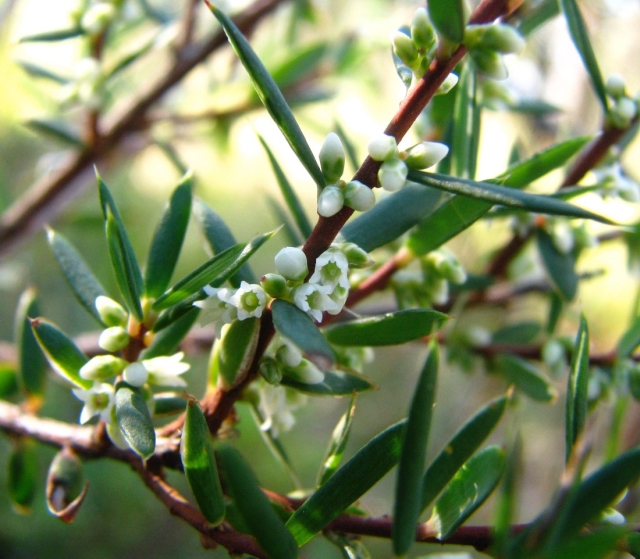 Prickly Broom-heath female flowers
Prickly Broom-heath female flowers
After the nature walk, I decided to check Teds Track and what a surprise I had, as the area which was burnt last autumn was shining with fresh greenery on the upper storey and lower storey plants. The burn has temporarily removed the overshadowing mid-storey plants, and low-level browning grasses and reeds.
 A selection of lower storey plants
A selection of lower storey plants
Initially the eucalypts and grasstrees were the most obvious. The stringybarks, Messmate, Eucalyptus obliqua, were covered in new leaves which were spreading along their branches due to the post-fire epicormic growth.
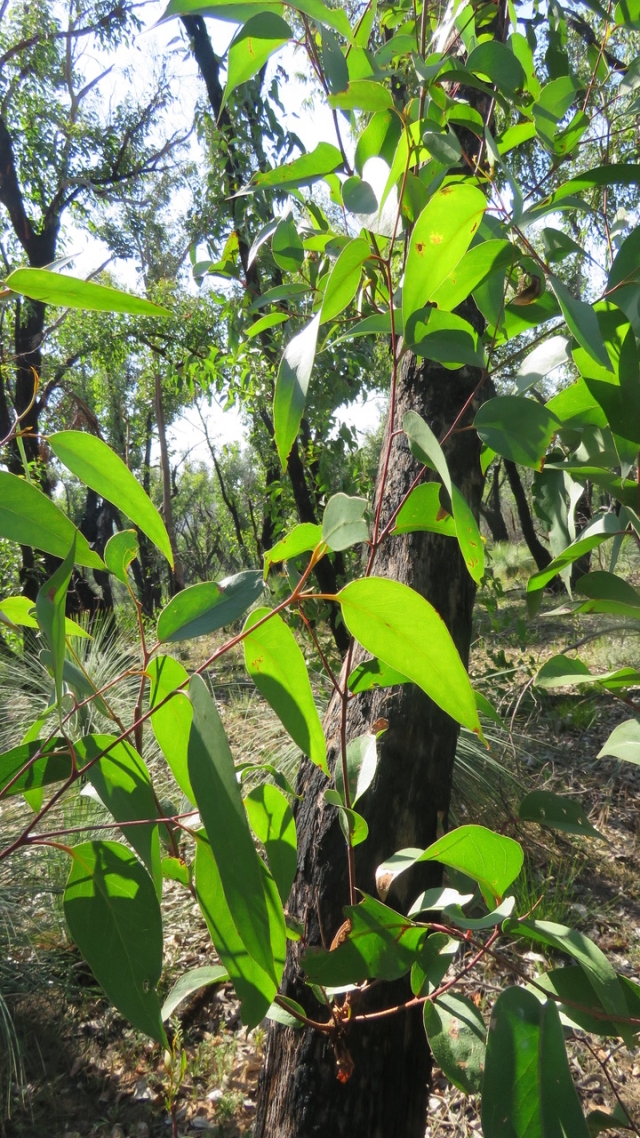 Epicormic growth on Messmate
Epicormic growth on Messmate
Below them were the Grass-trees, Xanthorrhoea, with their large, graceful tufts of narrow green leaves, mostly surmounted by tall browning flower spikes.
 Grass-trees
Grass-trees
A close look revealed scores of mostly empty seed cases as the seeds had dispersed.
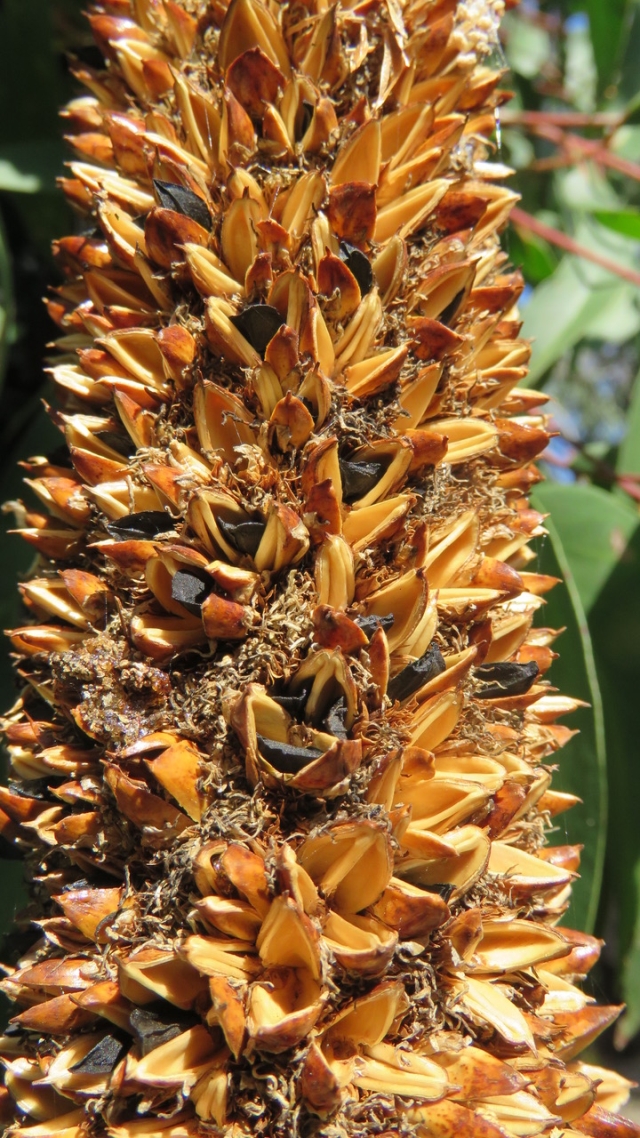 Grass-tree spike
Grass-tree spike
The low plants underneath were sporting fresh green growth, and provided an ideal opportunity to identify plants by their leaves and growth habits—always a challenge. I was amazed by the fresh pale green of the biggish angular leaves of Common Flat Pea, Platylobium obtusangulum, surprisingly hardy. I also discovered that the points on the end of the leaves are very sharp and best avoided!
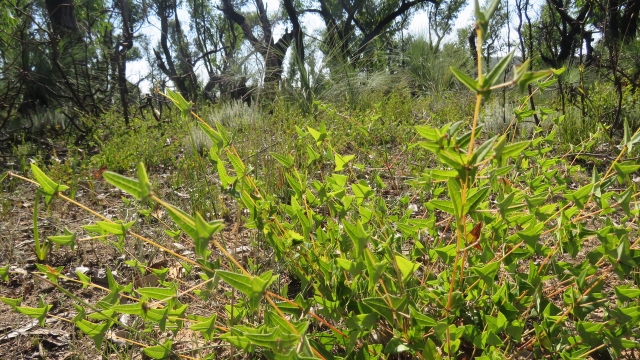 Common Flat Pea
Common Flat Pea
Leafless Bitter-pea, Daviesia brevifolia, is a plant superbly adapted for dryness, having no leaves, and it was standing out in full sculptural glory.
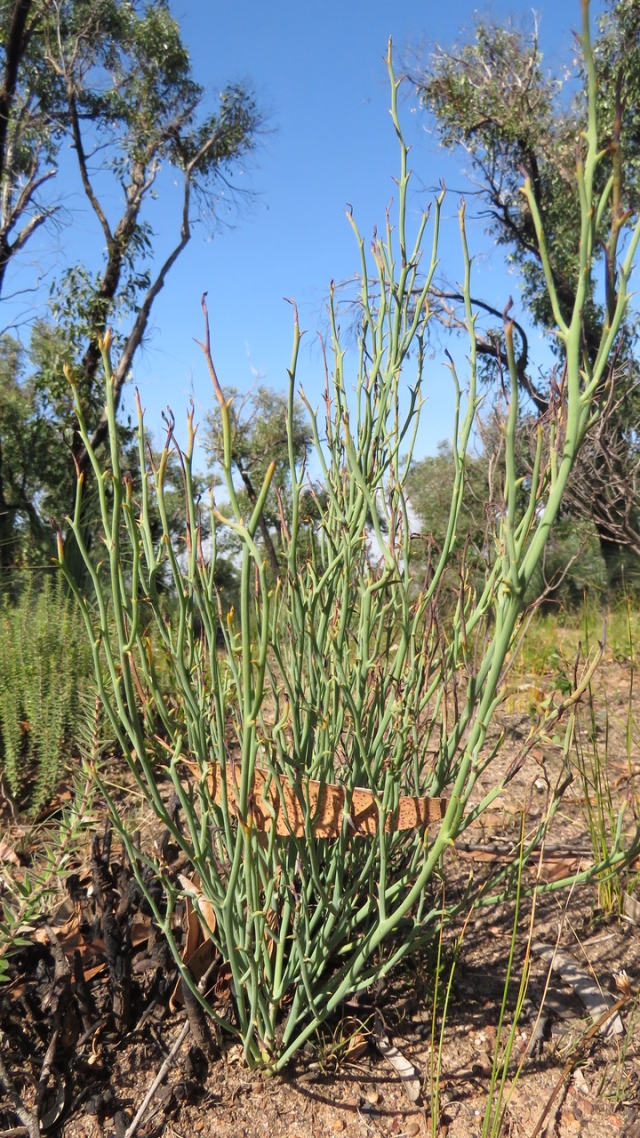 Leafless Bitter-pea
Leafless Bitter-pea
Also doing well were the many low bushes of Honey-pots, Acrotriche serrulata. Horny Cone-bush, Isopogon ceratophyllus, were developing pale green prickly leaves from lignotubers at the base of upright burnt stem and cones.
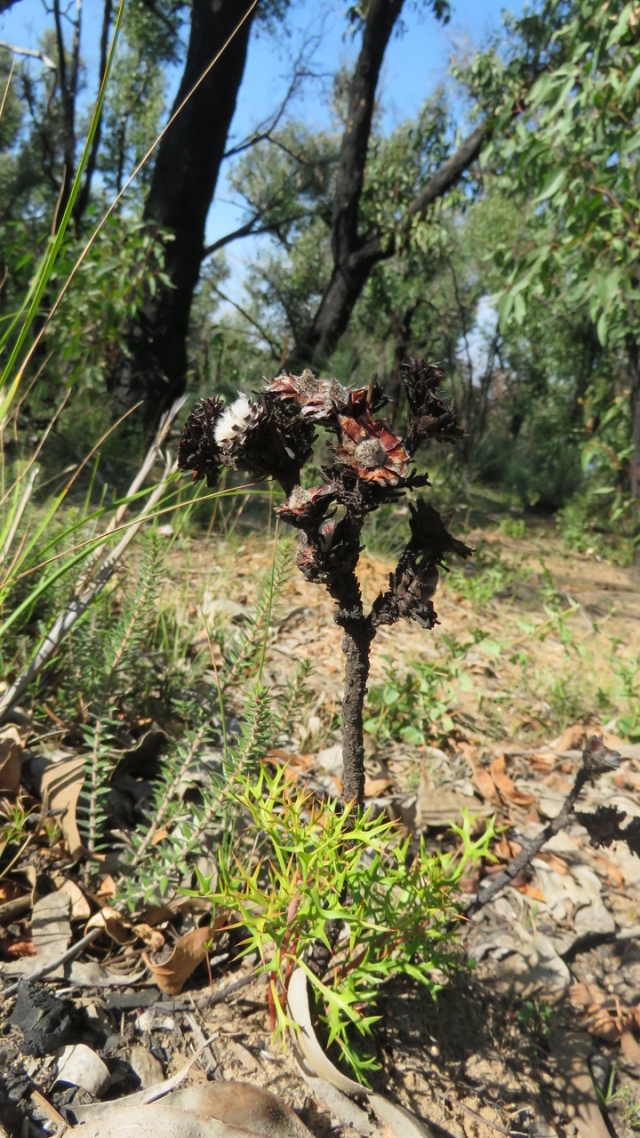 Horny Cone-bush
Horny Cone-bush
There were several examples of Holly Lomatia, Lomatia ilicifolia, which I had never noticed before beside the track, one partially hiding under a grass-tree and lots of healthy baby Silver Banksia, B. marginata, and many more.
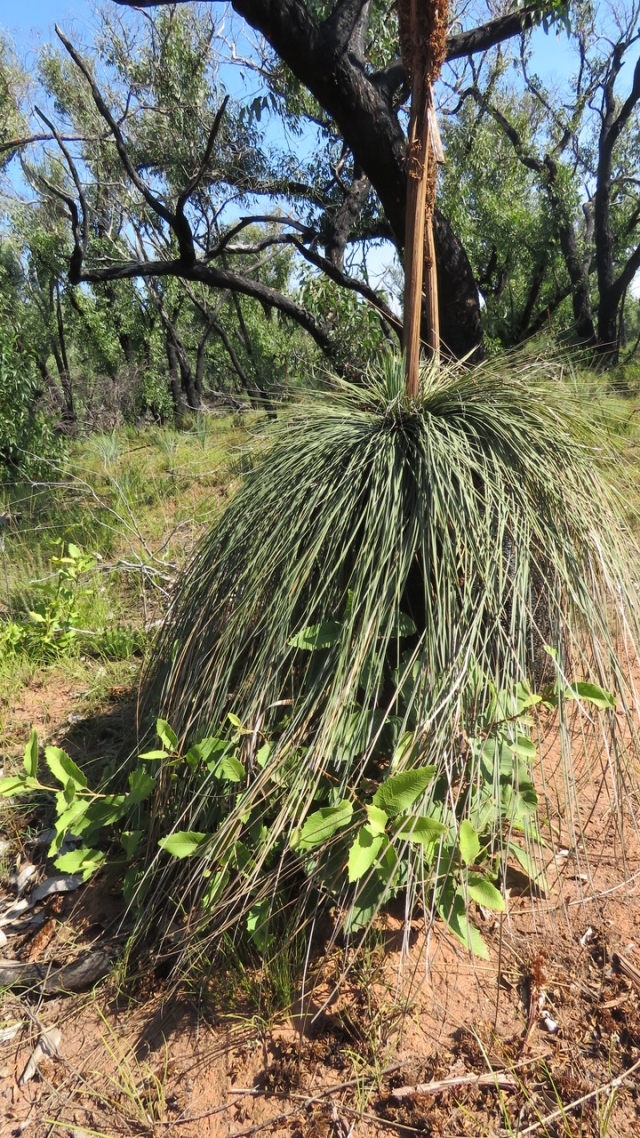 Holly Lomatia under Grass-tree
Holly Lomatia under Grass-tree
Finally, there was a flash of bright pink and I saw two small shrubs of Common Heath, Epacris impressa, developing their delightful tubular flowers. I wonder how many plants you might be able to identify there?
While weeding at the O’Donohue Road heathlands I was very excited to see, under a bank of trees, a carpet of large white daisies which are new to me, Satin Everlasting, Helichrysum leucopsidium. Unfortunately, the flowers have set seed and are nearing the end of their life, so I am really looking forward to getting back there next summer when they are flowering again.
 Satin Everlasting
Satin Everlasting
There are two species of large Sheoaks, Allocasuarinas, which should flower this month. The female plants have round, hard, serrated nuts from previous seasons and should develop small globular orange to reddish flowers along the branches which will turn into the distinctive nuts. The male plants should develop long orange tassels. In coastal areas look out for the Drooping Sheoak, Allocasuarina verticillata, with dangling tassels, and further inland Black Sheoak, Allocasuarina littoralis, with upright tassels.
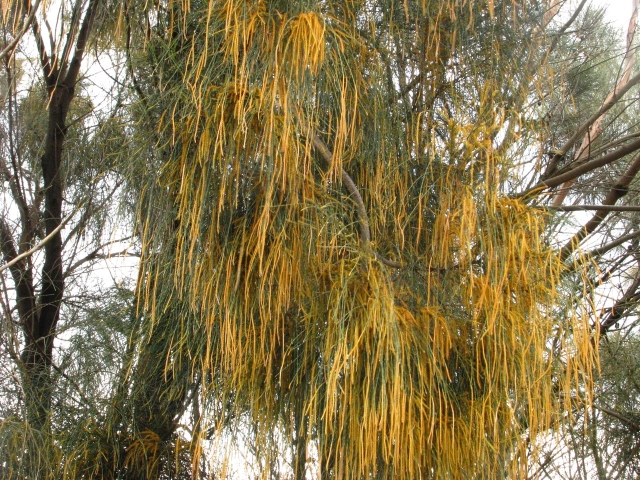 Drooping Sheoak
Drooping Sheoak
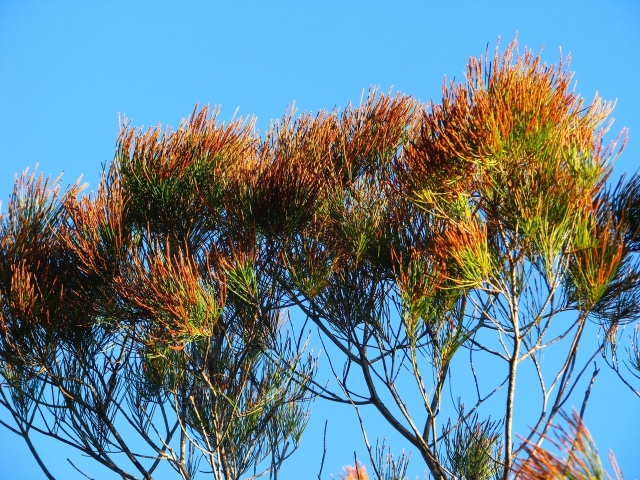 Black Sheoak
Black Sheoak
Remember to carry your Flowers of Anglesea and Aireys Inlet to help identify the often confusing plants.
Ellinor Campbell